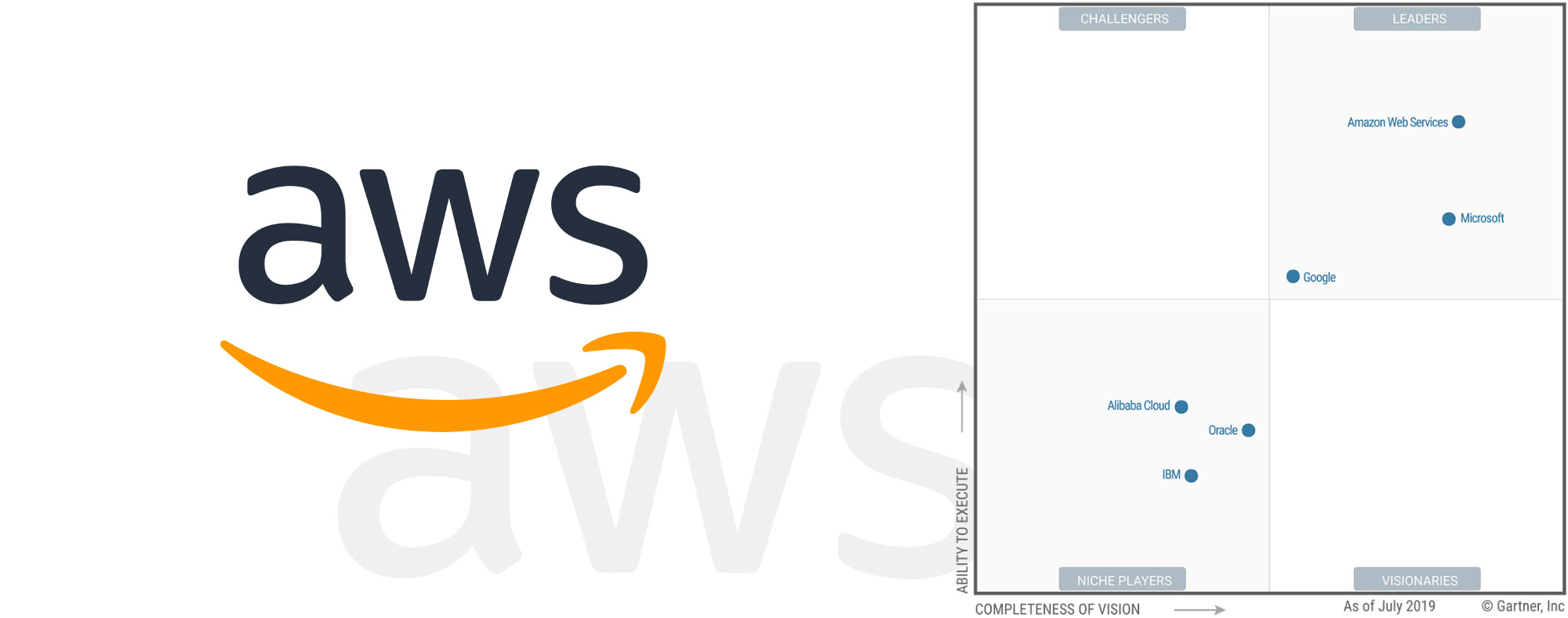THE CLOUD OPERATING SYSTEM
Amazon Web Services (also called AWS Cloud) is a cloud services provider and therefore something like an operating system for Internet-enabled services. The AWS Cloud can be used to provide functions that were previously located in a separate data center or rack: file servers, web servers and database servers. The special thing is that these resources are “scripted”, ie they can be created, stopped and deleted via interfaces. But AWS can do more like this:
Hundreds of other services have been added in recent years that work in a similar way, can be combined as desired, and have certain advantages over a conventional implementation. The main advantages of the AWS Cloud are that customers have full control over their services, they can be scaled practically infinitely on request and can be rolled out at many locations worldwide.
AWS also meets all data security requirements that companies in Germany are subject to.

To put it more specifically, a cloud services provider consists of these components:
- Infrastructure as a Service (IaaS),
- Platform as a Service (PaaS) and
- Software as a Service (SaaS) and
- Function as a Service (FaaS).
Infrastucture as a Service means that customers have access to available IT services via the Internet, for example in the area of data storage or computing power, and can use them anywhere and on different devices. Platform as a Service describes the use of a cloud platform over the Internet to develop web applications. Software as a Service stands for the provision of browser-based software by an external service provider that can be used by several users at the same time (an example of a SaaS service is Google Docs). Function as a service (FaaS) is a category of cloud computing services that provides a platform allowing customers to develop, run, and manage application functionalities without the complexity of building and maintaining the infrastructure typically associated with developing and launching an app (for example Lambda as part of the AWS Cloud).
In addition to AWS, there are several other providers of cloud services, such as Azure (Microsoft) and the Google Cloud Platform.

MAIN AWS SERVICES
I have been dealing with the basic AWS services EC2, S3 and Route 53 especially between 2018 and 2021. Earlier, I installed, configured and made hardware available myself in the data center for more than 10 years. Cloud services free a devops engineer of “manual” work in the data center and shift the work to the software level.
I decided to take AWS certifications, because I am very interested in the topic of cloud computing and want to get to know as many aspects of the AWS Cloud as possible. Meanwhile, I am accordingly certified as AWS Solutions Architect Associate.
The most important building blocks in everyday AWS use are:
Furthermore, AWS can protect your websites and APIs against DDOS attacks on layers 3, 4 and 7 in the OSI model.
The cloud area is still in its infancy and will continue to grow in the coming years as companies are moving more and more services there. Significant innovations are also expected in the fields of big data, artificial intelligence and machine learning.
Amazon Web Services is the market leader for cloud services. But it’s not the only one. In the last months I also got involved in projects using Azure and GCP (Google Cloud Platform).
